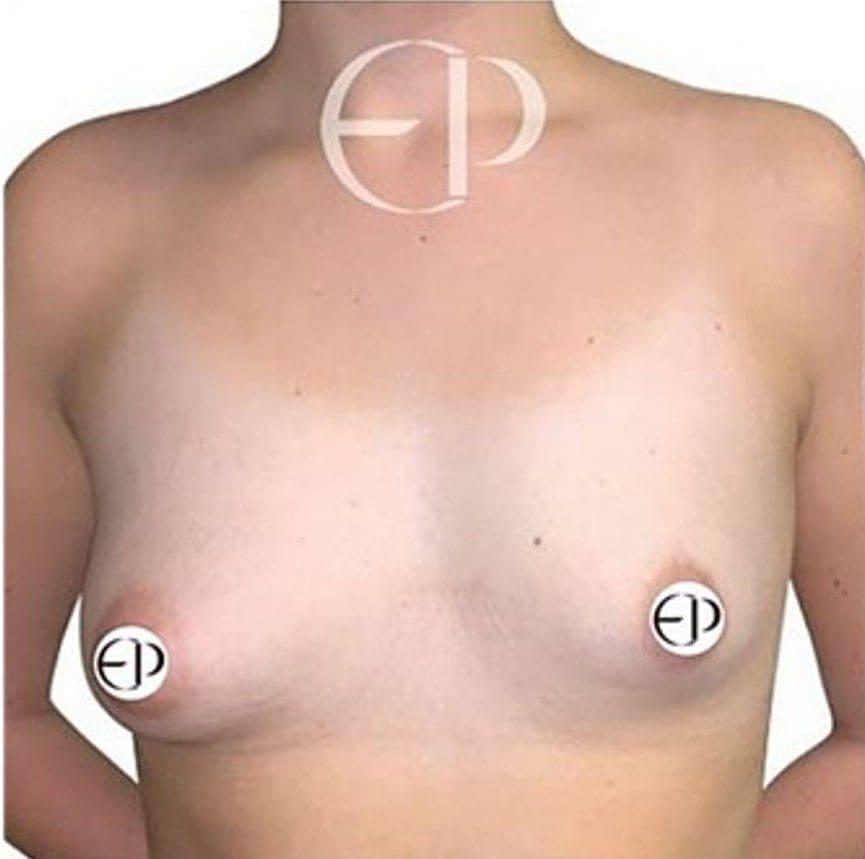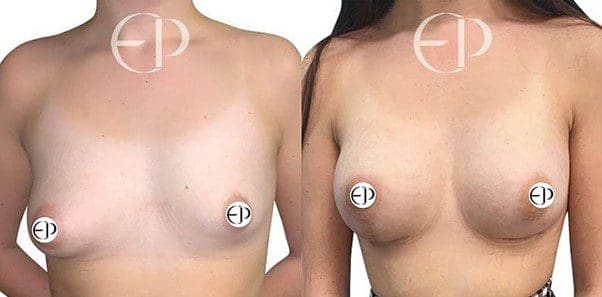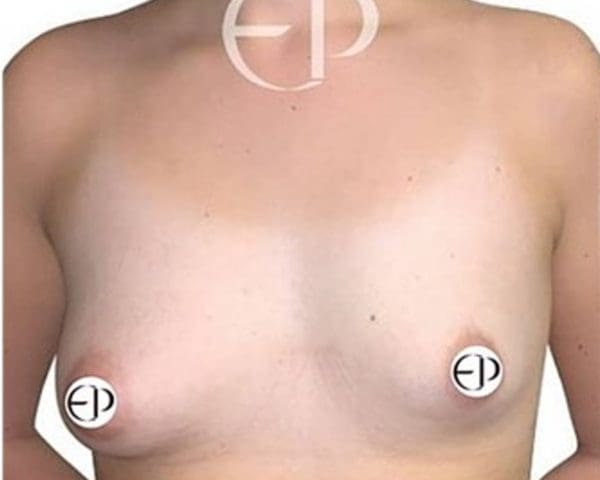Breast deformities can cause significant psychological distress and self-esteem problems, particularly in young women. Tuberous, tubular, or hypoplastic breast deformities are characterised by conic or cylindrical shape. The condition is relatively rare and is not a health risk. However, some may want to consider surgical correction for aesthetic reasons.
The condition has been well-documented, and there are three, potentially, four types of tubular breasts. Little is understood about the cause. Here, we discuss the characteristics of tubular breasts. Then we review the possible causes of the condition and how it manifests. Finally, we address the risk factors of tubular breast syndrome and the possible treatment options.
Click on one of the links to jump to that section
-
What characterises tubular breasts?
Learn about the common traits of tubular breast deformities and how the condition is diagnosed
-
Possible causes of tubular breasts?
We discuss the literature surrounding the causes of tubular breast deformities. Are they congenital?
-
What are the risks of tubular breasts?
Rest assured that tubular breast deformities aren’t dangerous; why do some still choose to operate?
-
Treatment options for tuberous breasts
We explore the treatment options for tubular breasts and what to expect from the procedures.
- Frequently Asked Questions
What characterises tubular breasts?
Tuberous breasts have so far been diagnosed symptomatically. Typically, hypoplastic breasts display restricted vertical and horizontal breast development, leaving an elongated, conic, cylindrical or oval shape. However, a universal characteristic of tubular breasts is the weakness of the nipple-areolar complex. A herniation is a common trait. In fact, isolated herniation of the nipple/areola (with a typical breast base) has been proposed to be included in the diagnosis of tubular breasts. Below is a summary of the symptoms of tubular breasts:
-
Enlarged, protruding nipple/areola
-
Conic, cylindrical or oval shape
-
Limited breast development horizontally and vertically
-
Breast hypoplasia in the lower quadrant
-
Drooping breasts
-
Asymmetric breasts
-
Overall lack of breast tissue
-
Small breast base
-
Downward, upward or outward-pointing nipples
-
A large gap between breasts (Wide-set, over 1.5 inches).

What are the possible causes of tubular breasts?
A combination of two factors is thought to cause tubular breasts – the weakness of the connective tissue around the nipple-areola complex and the thickening and constricting of the breast fascia. The breast fascia encases the breast tissue and plays a role in determining breast shape. A tightened breast fascia can ‘tunnel’ breast tissue forward, causing it to herniate the NAC, forming a bulging areola.
Research found that patients with tubular breast deformities had significantly higher collagen deposits in the connective tissue surrounding the breast parenchyma. The consequence is a non-elastic, fibrous ‘ring’ of tissue that restricts the normal development of the breasts, leading to their conic shape and underdevelopment, particularly in the lower portion of the breast.
There is no known cause of these excessive collagen deposits. However, they may be linked to the prenatal environment or genetics. A researcher observed that a pair of identical twins had tubular breasts suggesting a potential genetic or developmental cause.
Find out more about treatments for tuberous breasts here.
What are the risks of tubular breasts?
Fortunately, hypoplastic breast deformities are entirely harmless. Most do not experience any discomfort and can breastfeed normally. In some cases, breastfeeding can be impaired due to insufficient breast tissue.
The most significant risk with tubular breasts is their tendency to impact the patient’s mental health. Many struggle with self-esteem issues relating to breast size and shape, nipple prolapse and potential breast asymmetry (which is very common).
“I like helping these young patients. Their confidence and well-being are normally very affected by how their breasts look…Surgery is truly life-changing for a lot of them.”
– Elena Prousskaia, 2023.
Treatment options for tuberous breasts
The condition develops in puberty, and there is no way to prevent the formation of tubular breasts. Since the deformity can have significant psychological impacts, many turn to plastic surgery to correct the breast shape.
Traditional augmentation surgery usually can’t address the fibrous constriction of the breasts and can leave the patient with poor aesthetic outcomes. A different approach needs to be taken for tuberous breasts.
You can find out more about tuberous breasts surgery here.
Dr Elena reveals that “Correction of tuberous breast(s) requires not only the use of implants but also breast tissue remodelling.” First, the surgeon must disturb as much fibrous tissue as possible to release the constricted breast tissue. A breast implant can fill the missing volume, while breast tissue removal can help minimise the deformity, particularly for gynaecomastia. “In cases of severe deformity, two-stage procedures can be done. Firstly, a balloon called “an expander” is inserted and inflated gradually to stretch the skin to the desired size…[then] the expander will be exchanged for an implant”, explains Dr Elena. Your plastic surgeon may use a combination of techniques for the best results.
Typically, the surgeon will reduce the areola size by making a doughnut-shaped incision to remove some excess skin. The patient may have scars on the underside or around the areola (round-block) or a vertical scar underneath the breast.

Frequently Asked Questions
-
The cost of your procedure will depend on the type of approach that is used. Breast implants or natural tissue can modify the breast shape and size. Corrective surgery can be more complex, so the price starts at around £6,380. View our price guides or book a consultation today to see how much the procedure could cost.
-
Tubular breast correction is not always straightforward. A traditional breast augmentation will not fix the condition, and an inexperienced surgeon may leave you unsatisfied. Look for a specialist in tubular breast surgery if you want natural-looking breasts without recurrence of tubular deformities. Our clients say they “can’t praise Mrs Prousskaia and her team enough.”
-
An experienced surgeon may take 1-2 hours to complete the cosmetic surgery. However, this will depend on the type of plastic surgery, whether the surgeon uses pedicled flaps or breast implants. One patient comments, “I am four weeks post-op, and I couldn’t be happier with the results I’m seeing following my tuberous breast correction.”
-
The plastic surgeon will make an incision on the underside of the areola and try to release the restricted breast by disturbing the fibrous ring. During breast reconstruction, the surgeon will separate a lower portion of breast tissue and fold it over itself to fill the lower quadrant of the breast. Implants can also be placed underneath the breast parenchyma (a tissue expander may be necessary).
-
Cosmetic surgery always has possible complications such as haematoma, scars or infection. Using implants can run the risk of capsular contracture, implant rupture or displacement. Breast reconstructive surgery can risk tissue necrosis if the blood supply is damaged. Sensation in the nipple can occasionally be altered.
Sources
-
Tuberous Breast: Revised Classification and a New Hypothesis for its Development
-
Tuberous breast: Morphological study and overview of a borderline entity
-
Central Mound Mastopexy for the Correction of Tuberous/Tubular Breast Deformity
-
Tuberous Breast Deformity Correction Surgery: Live Streaming Plastic Surgery by Dr Michael J. Brown




